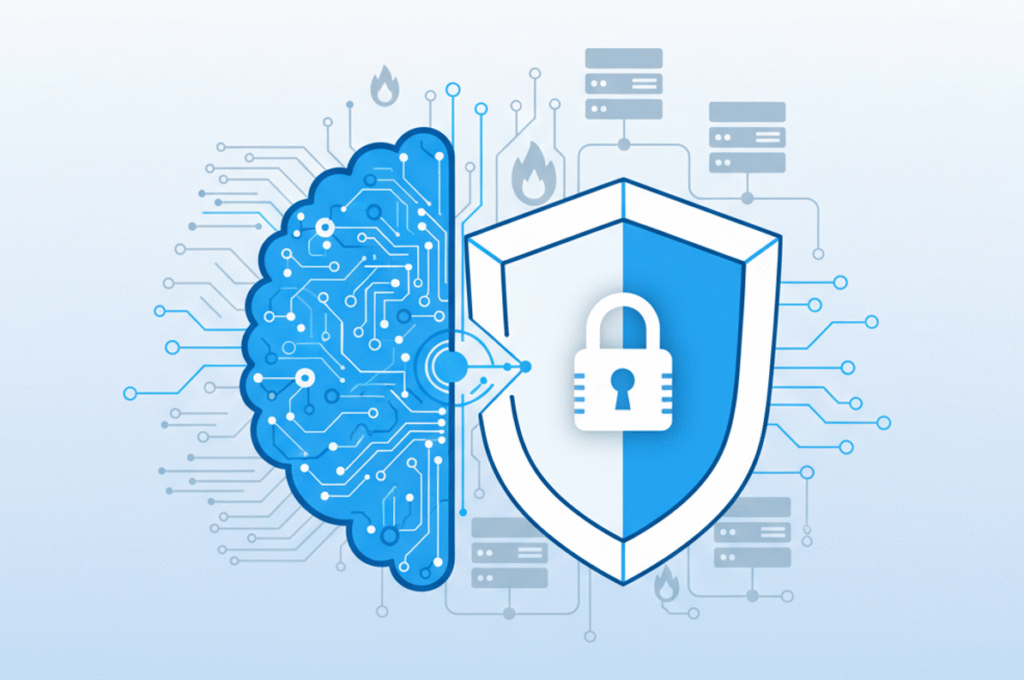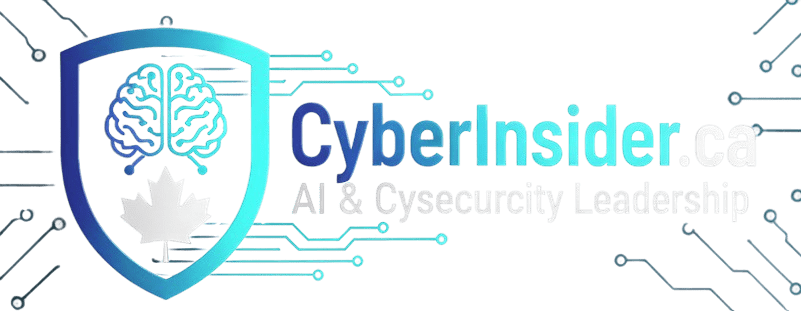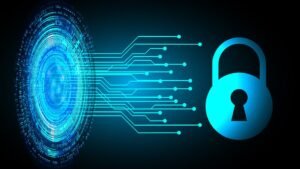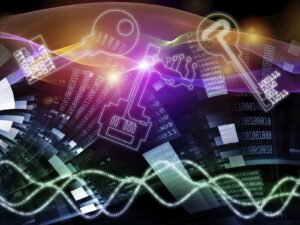
Artificial intelligence has moved from research labs into every enterprise process — from predictive maintenance and supply-chain forecasting to HR analytics and customer engagement.
Yet, as AI systems become part of daily operations, a silent misalignment has emerged inside many organizations: AI innovation is racing ahead, while cybersecurity policies remain anchored in pre-AI realities.
The result? A widening governance gap — one that can expose businesses to unseen risks, regulatory penalties, and even ethical crises.
In 2025, aligning AI initiatives with cybersecurity policies is not a luxury; it’s an organizational survival skill.
1. Why Alignment Matters Now
AI systems don’t operate in isolation. They ingest sensitive data, make autonomous decisions, and interact with core infrastructure. When these systems are deployed without proper integration into existing cybersecurity frameworks, three predictable issues follow:
- Shadow-AI and visibility gaps – departments experimenting with AI tools outside IT oversight.
- Policy mismatch – legacy security controls (e.g., access management, data retention) not adapted to AI data flows.
- Ethical exposure – algorithms trained on biased or unprotected data creating compliance and reputational risks.
From my experience leading IT–business collaboration projects, the friction usually doesn’t stem from bad intent. It stems from different speeds: AI teams move fast; cybersecurity teams move cautiously. Alignment brings these worlds to the same tempo.
2. Start with Governance, Not Technology
Before reviewing tools or models, organizations need a shared governance language. In 2025, this typically means aligning three pillars:
a. Corporate AI Policy
Defines the purpose, acceptable use, and ethical boundaries of AI within the enterprise.
b. Cybersecurity & Risk Framework
Specifies how data, infrastructure, and systems are protected (for example, ISO 27001, NIST CSF, or your corporate risk matrix).
c. AI Risk Management Framework
Emerging standards such as NIST AI RMF and ISO/IEC 42001 provide structure for identifying, assessing, and mitigating AI-specific risks.
When these three pillars overlap, AI projects gain both speed and safety. Without overlap, teams debate ownership instead of progress.
Pro Tip: Create a short “AI–Cyber Integration Charter” — a two-page document that maps where your AI governance responsibilities meet cybersecurity controls (e.g., who approves data sources, who monitors model drift, who audits third-party AI APIs).
3. Map Cybersecurity Domains to AI Life Cycle Stages
Traditional cybersecurity policies follow control families such as identity management, data protection, network security, and incident response.
To align them with AI, map these controls across the AI life cycle:
| AI Life Cycle Stage | Relevant Cybersecurity Domain | Alignment Objective |
|---|---|---|
| Data Collection | Data governance, access control | Verify data integrity, consent, and provenance. |
| Model Development | Secure coding, change management | Protect training environments and version control. |
| Deployment | Cloud and API security | Harden endpoints and secure integration layers. |
| Monitoring & Maintenance | Threat detection, logging, audit | Detect model manipulation, data poisoning, or drift. |
| Decommissioning | Data disposal, archival policies | Ensure model data and artifacts are securely retired. |
This simple mapping turns abstract policies into operational guidance every AI and cyber team can understand.
4. Bridge Cultural and Process Gaps
Technology is rarely the hardest part — culture is.
AI teams often prioritize experimentation, while cybersecurity teams emphasize control. The alignment process requires translators who can speak both languages.
A few proven methods:
- Shared risk workshops: bring data scientists and security officers together to map potential AI failure modes.
- Security champions in AI teams: appoint one technically curious member to liaise with cybersecurity.
- AI literacy for cyber teams: short training sessions explaining how models, datasets, and pipelines work.
In several organizations I’ve supported, these small bridges delivered more progress than any new tool purchase.
5. Integrate AI into the Security Policy Framework
Updating a policy doesn’t always mean rewriting it. Often it means adding AI-specific clauses inside existing policies:
| Existing Policy | Add AI Clause Example |
|---|---|
| Access Control Policy | Define privileged access for AI training environments and model registries. |
| Data Classification Policy | Introduce an “AI-Sensitive” tag for data used in model training. |
| Incident Response Plan | Add playbooks for AI misuse (prompt injection, model exfiltration, malicious outputs). |
| Third-Party Risk Policy | Require AI vendors to disclose model lineage, data sources, and security posture. |
These incremental updates keep governance familiar while making it future-ready.
6. Leverage Standards and Regulations Emerging in 2025
Staying aligned with global standards strengthens both compliance and reputation.
- ISO/IEC 42001 – AI Management System Standard
Focuses on responsible AI development and deployment. Integrate its clauses into your existing ISO 27001 structure. - NIST AI RMF v1.0
Provides a risk-based framework with functions – Map, Measure, Manage, and Govern – mirroring cybersecurity’s own approach. - Canada’s AIDA (Artificial Intelligence and Data Act)
Expected enforcement in 2025 emphasizes transparency and accountability for high-impact AI systems.
Referencing these frameworks in your internal documentation demonstrates proactive compliance — something regulators appreciate.
7. Strengthen Identity, Access, and Data Controls for AI
AI alignment begins with data discipline.
Because models can unintentionally expose or memorize sensitive information, every organization should revisit:
- Identity & Access Management (IAM): ensure least-privilege access to datasets and model APIs.
- Data Encryption: apply encryption both in transit and at rest for training and inference data.
- Logging & Monitoring: record who accessed or modified models, and when.
- Data Provenance: maintain clear lineage for each dataset to prove ethical sourcing.
These are classic cybersecurity principles — simply adapted for the AI era.
8. Build Continuous Risk Visibility
Unlike traditional software, AI systems evolve after deployment.
Models drift, data changes, and new attack surfaces appear.
To stay aligned, implement continuous assurance mechanisms:
- Model monitoring: detect anomalies or unexpected behavior.
- Security analytics: integrate AI system logs into the Security Operations Center (SOC).
- Periodic audits: review AI model inventories and risk assessments quarterly.
- Red-team testing: simulate adversarial attacks against your AI models.
Such proactive vigilance demonstrates mature governance and keeps alignment from degrading over time.
9. Empower Leadership and Accountability
Alignment is ultimately a leadership responsibility.
Executives must understand that AI governance is a security function and a business enabler.
Establish:
- An AI Governance Board or expand your existing Risk Committee’s mandate.
- Clear accountability matrices: who owns data, models, controls, and incident response.
- Executive dashboards showing AI risk metrics alongside traditional cyber KPIs.
From my own cross-functional work with senior leaders, I’ve seen that once leadership visibility increases, alignment improves naturally — because it becomes part of the organization’s risk language.
10. Cultivate a Culture of Responsible Innovation
Technology alignment is incomplete without ethical alignment.
Encourage employees to think not only about “Can we build it?” but “Should we build it this way?”
Practical steps:
- Ethics awareness campaigns alongside cybersecurity awareness months.
- Pre-deployment reviews for bias, fairness, and data privacy.
- Feedback channels for employees to raise AI-related ethical or security concerns.
When culture matures, compliance follows almost effortlessly.
11. Metrics That Prove Alignment
To show tangible progress, track measurable indicators:
| Metric | Description |
|---|---|
| % AI projects reviewed by security team | Indicates collaboration maturity |
| Time from AI proposal to security sign-off | Measures process efficiency |
| Number of AI-related incidents | Gauges risk exposure |
| Training completion rates (AI + Cyber) | Reflects cultural adoption |
Publish these metrics internally; transparency reinforces accountability.
12. Looking Ahead: 2025 and Beyond
In 2025, the convergence of AI, cybersecurity, and governance will define organizational resilience.
The companies that thrive will be those that integrate controls without stifling innovation — creating ecosystems where data scientists, risk managers, and executives share one governance language.
For professionals navigating this change, the opportunity is immense.
Whether you’re in IT, security, or leadership, your ability to align AI initiatives with cybersecurity principles will be a defining skill of this decade.
Key Takeaways
- Alignment isn’t a compliance exercise — it’s a strategic differentiator.
- Start with governance; let policies drive tools, not the other way around.
- Map AI life cycles to existing cybersecurity domains for practical integration.
- Embed AI considerations into current policies instead of writing new ones from scratch.
- Keep learning: NIST AI RMF, ISO 42001, and upcoming regional acts will continue evolving.
A Final Thought from My Experience
As someone who has spent years bridging business goals with technology and security priorities, I’ve learned that successful alignment happens when people from different disciplines truly understand each other’s constraints.
The same lesson applies to AI and cybersecurity in 2025: alignment begins with dialogue and shared purpose, not just documentation.



